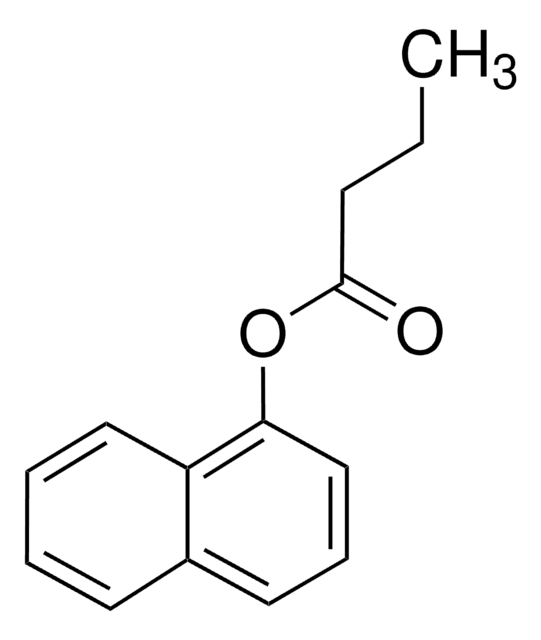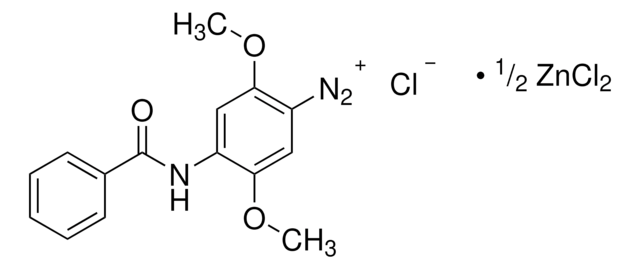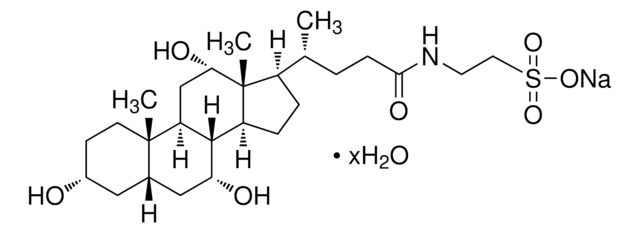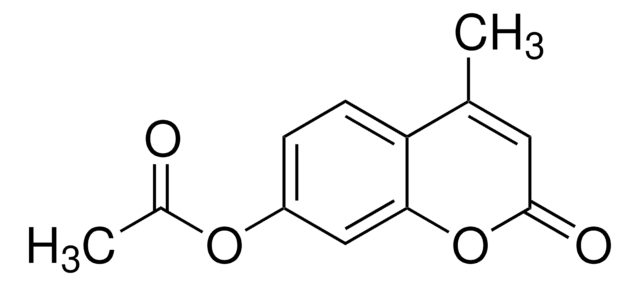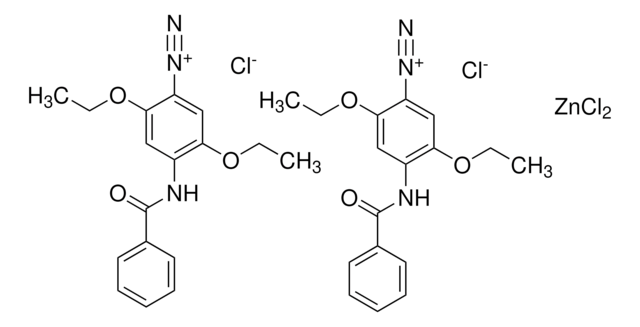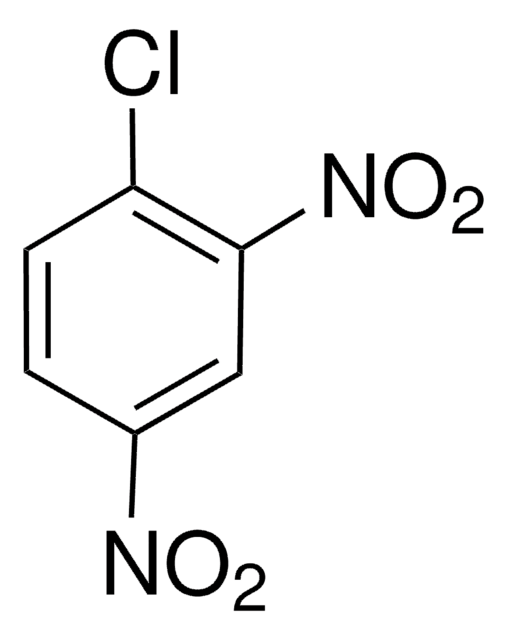N6875
2-Naphthyl acetate
Synonym(s):
β-Naphthyl acetate
Sign Into View Organizational & Contract Pricing
All Photos(1)
About This Item
Linear Formula:
CH3CO2C10H7
CAS Number:
Molecular Weight:
186.21
Beilstein/REAXYS Number:
1868291
EC Number:
MDL number:
UNSPSC Code:
12352204
PubChem Substance ID:
NACRES:
NA.32
Recommended Products
form
powder
Quality Level
impurities
<0.2% Free naphthol
mp
67-70 °C (lit.)
solubility
ethanol: 50 mg/mL
storage temp.
−20°C
SMILES string
CC(=O)Oc1ccc2ccccc2c1
InChI
1S/C12H10O2/c1-9(13)14-12-7-6-10-4-2-3-5-11(10)8-12/h2-8H,1H3
InChI key
RJNPPEUAJCEUPV-UHFFFAOYSA-N
Looking for similar products? Visit Product Comparison Guide
Application
2-Naphthyl acetate has been used as a substrate:
- in substrate sodium dodecyl sulfate-polyacrylamide gel electrophoresis (SDS-PAGE) to examine the composition of lipases in larvae and adult specimens
- in the preparation of zymograms to identify proteins with lipase activity
- to measure non-specific esterase activity and β-esterase enzyme activity
Biochem/physiol Actions
2-Naphthyl acetate/β-naphthyl acetate (BNA) is an ester substrate. It can be used in staining gels to detect esterase activity. BNA dissolved in acetone and ethanol produces a dark and very light/no background respectively. Hence destaining is not necessary if ethanol is used to dissolve BNA for esterase staining of gels.
signalword
Danger
hcodes
Hazard Classifications
Eye Dam. 1
Storage Class
11 - Combustible Solids
wgk_germany
WGK 3
flash_point_f
Not applicable
flash_point_c
Not applicable
ppe
dust mask type N95 (US), Eyeshields, Gloves
Choose from one of the most recent versions:
Already Own This Product?
Find documentation for the products that you have recently purchased in the Document Library.
Customers Also Viewed
Marina Lidwine Olé Sangba et al.
Parasites & vectors, 10(1), 23-23 (2017-01-15)
Knowledge of insecticide resistance status in the main malaria vectors is an essential component of effective malaria vector control. This study presents the first evaluation of the status of insecticide resistance in Anopheles gambiae populations from Bangui, the Central African
Sofía Otero et al.
Aquatic toxicology (Amsterdam, Netherlands), 180, 186-195 (2016-10-11)
Organophosphate insecticides (OPs) continue to be an important class of agrochemicals used in modern agriculture worldwide. Even though these pesticides persist in the environment for a relatively short time, they show a high acute toxicity that may represent a serious
Yu Cheng Zhu et al.
Pesticide biochemistry and physiology, 122, 15-21 (2015-06-15)
Fall armyworm (FAW) is a damaging pest of many economic crops. Long-term use of chemical control prompted resistance development to many insecticide classes. Many populations were found to be significantly less susceptible to major Bt toxins expressed in transgenic crops.
Aditya Iyer et al.
Biochimica et biophysica acta, 1840(9), 2935-2943 (2014-06-18)
Tagging a luminescent quantum dot (QD) with a biological like enzyme (Enz) creates value-added entities like quantum dot-enzyme bioconjugates (QDEnzBio) that find utility as sensors to detect glucose or beacons to track enzymes in vivo. For such applications, it is
Our team of scientists has experience in all areas of research including Life Science, Material Science, Chemical Synthesis, Chromatography, Analytical and many others.
Contact Technical Service

